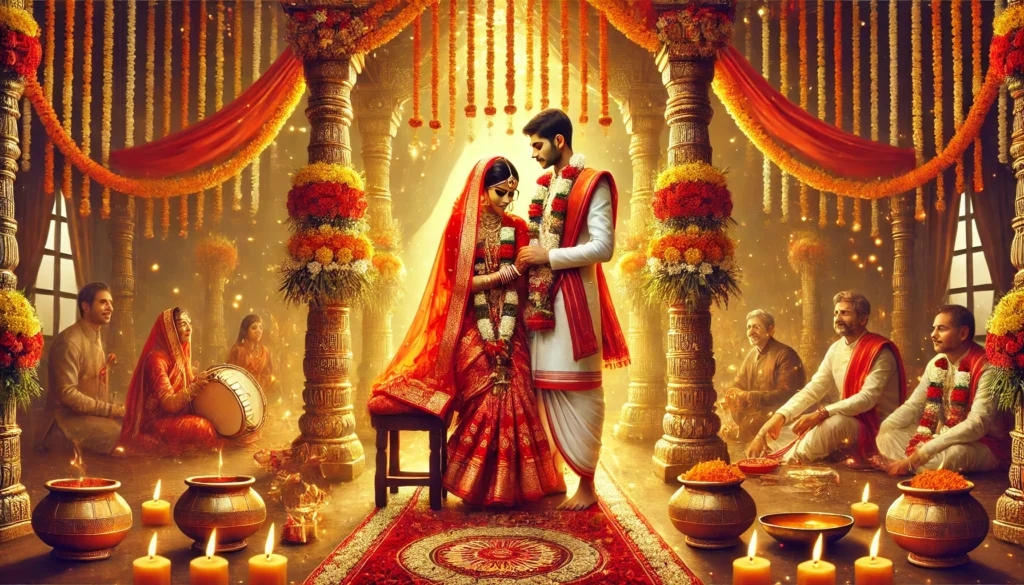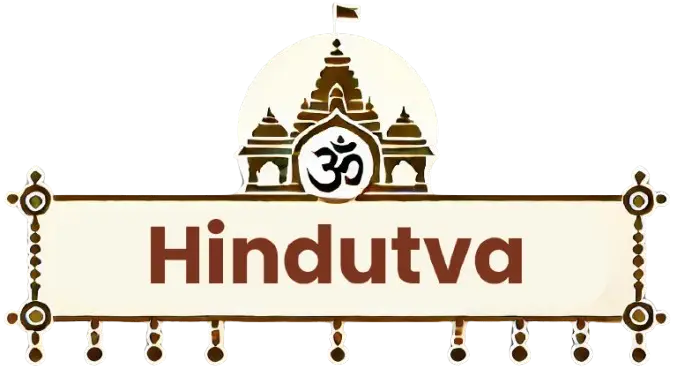Discover the vibrant and soulful traditions of Bengali Hindu weddings, from pre-wedding rituals like Gaye Holud to the sacred sindoor daan ceremony. Explore the cultural richness, modern influences, and timeless practices that make these weddings uniquely captivating.
Imagine yourself entering a Bengali Hindu wedding—a ceremony filled with colors, melodies, and an unmistakable charm that blends simplicity with grandeur. The fragrance of fresh flowers fills the air, accompanied by the sounds of conch shells and ululation. The bride’s radiant red Banarasi saree and the groom’s regal dhoti-kurta reflect centuries of cultural richness, yet these traditions continue to feel profoundly relevant. As someone deeply connected to the Bengali culture, I find these weddings a fascinating amalgamation of rituals, emotions, and community involvement.

This article explores Bengali Hindu wedding traditions, tracing their roots, understanding their significance, and revealing why they stand out as uniquely enchanting ceremonies in Indian culture.
Pre-Wedding Rituals: Preparing for the Big Day
Aashirbaad (Blessings Ceremony)
The journey to a Bengali wedding begins with Aashirbaad, where elders bless the bride and groom. Gold jewelry and gifts symbolize the families’ commitment and blessings for prosperity.
I remember attending my cousin’s Aashirbaad ceremony—a simple yet deeply emotional gathering. The sight of elders placing gold ornaments on the bride’s forehead as a mark of blessing was truly touching. It reaffirmed the collective responsibility of families in the couple’s new journey.
Paka Kotha: Formalizing the Union
Unlike engagements in other Indian cultures, Bengalis host a formal Paka Kotha, where the wedding date is fixed in the presence of family priests. This is a moment of shared joy and anticipation.
Discover more about traditional Bengali engagements.
Haldi (Gaye Holud): A Splash of Color
Gaye Holud, the Bengali version of the Haldi ceremony, is a visual treat. Turmeric paste mixed with mustard oil is applied to the bride and groom to bless them with glowing skin and protection from evil spirits.
When I attended a friend’s Gaye Holud, the energy was infectious. Friends and family playfully smeared turmeric on the couple, followed by dancing and feasting. The cheerful yellow theme turned the ceremony into a lively celebration.
Learn about the significance of Haldi ceremonies.
Wedding Day Rituals: A Symphony of Emotions
Bor Jatri: The Groom’s Grand Arrival
The groom’s procession, or Bor Jatri, is a spectacle. Dressed in traditional attire and wearing a unique headgear called Topor, the groom arrives with a lively entourage.
In one such procession I witnessed, the groom’s family danced to the beats of dhak (traditional drums). It was a moment of shared happiness, breaking the ice between the two families.
Shubho Drishti: The First Glance
Shubho Drishti is one of the most anticipated moments. The bride, covering her face with betel leaves, is carried on a wooden stool. As she removes the leaves, her first glance at the groom signifies the start of their lifelong connection.
The emotional resonance of this ritual always moves me. It’s more than a glance; it’s a silent promise.
Find out why rituals like Shubho Drishti hold emotional weight.
Saat Paak: Encircling the Groom
The bride encircles the groom seven times while being carried on the wooden stool, symbolizing the binding of their souls.
This part of the ceremony radiates a sense of fun and solemnity. The collective effort of family members lifting the bride reflects the importance of community in Bengali weddings.
Sindoor Daan and Ghomta: The Sacred Mark
The wedding reaches its peak when the groom applies sindoor (vermilion) on the bride’s parting hair. The bride’s head is then covered with a Ghomta (veil), marking her transition into married life.
Having seen this ritual multiple times, I’ve always admired its simplicity and depth. It’s a poignant moment, often accompanied by tears of joy and nostalgia.
Post-Wedding Rituals: Embarking on a New Journey
Bidaai: A Tearful Farewell
The Bidaai is heart-wrenching, as the bride bids farewell to her family. It’s a moment that leaves everyone teary-eyed, including me whenever I’ve witnessed it.
Despite the sadness, it’s also a moment of hope as the bride steps into her new life with her partner.
Bou Bhaat: The Bride’s Formal Welcome
Bou Bhaat is the bride’s first meal at her husband’s home. She serves rice to family members, symbolizing her acceptance into the household.
During my sister’s Bou Bhaat, her meticulous efforts to make everyone feel at ease were a testament to how rituals foster bonds.
Modern Influences on Bengali Weddings
While the essence of Bengali weddings remains intact, modern elements have added a new dimension:
- Eco-Friendly Weddings: Couples are opting for sustainable practices, such as digital invitations and eco-friendly decor.
- Fusion Music: Traditional Bengali music is now mixed with contemporary tunes for a vibrant playlist.
- Minimalist Attire: While Banarasi sarees remain a favorite, modern brides are experimenting with pastel shades and lighter fabrics.
Explore the evolution of wedding traditions.
Why Bengali Weddings Are Globally Celebrated
The global fascination with Bengali weddings stems from their rich traditions, emotional depth, and aesthetic appeal. From the soulful rituals to the sumptuous feasts, these weddings are a celebration of life, love, and legacy.
Author:
Sunita Reddy – Mythologist & Storyteller

